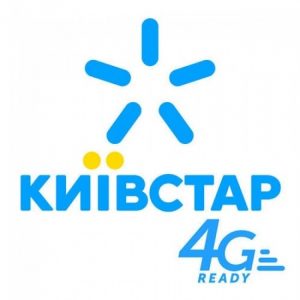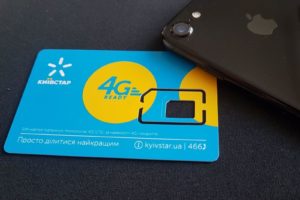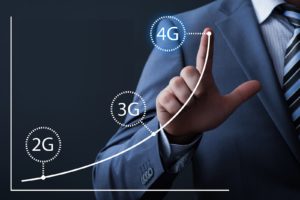
Mobile network operator Kyivstar has expanded its 4G network coverage in Volyn and Zhytomyr regions and connected 402 more settlements to new mobile technologies.
The press service of the company said on Thursday that in particular, in Zhytomyr region, high-speed mobile Internet appeared in the settlements of Andriyivka, Bilkivtsi, Zamyslovychi, Kalynivka, Korostyshiv, Lebedivka, Nemyrivka and in Volyn region in the settlements of Borokhiv, Volodymyr-Volynsky, Horodysche, Domanove, Liubeshiv, and Ruzhyn.
The operator said that in order to improve coverage, LTE900 technology was activated at 98 base stations.
According to the data provided, a total of 14,000 base stations of the operator support 4G communication, which makes it possible to access new mobile technologies for 87% of the population of Ukraine.
At the same time, the operator said that in 2021 it intends to continue developing the network to increase the population’s access to 4G up to 90%.

The mobile operators Kyivstar, Vodafone Ukraine and lifecell, together with Huawei, have launched 4G at 23 more stations of Kyiv metro and in the tunnels between them.
According to the joint press release of the operators, in general, since October 28, the high-speed mobile Internet of three operators has been operating at 45 out of 46 underground stations.
4G will appear at the last Teremky station during December.
The launch of the 4G network in the metro began in March this year from the Akademmistechko station and continued gradually.
“It is interesting that almost 300,000 subscribers of all three operators use 4G Internet every day on average. Together, subscribers of mobile operators have already used more than 400 terabytes of traffic in the metro. This volume would be enough, for example, for a continuous viewing high quality video for 30 years,” the release notes.
For 4G operation in the metro Kyivstar, Vodafone Ukraine and lifecell use joint equipment from Huawei, but their own frequencies in accordance with licenses. Frequencies are used in two bands: 1800 MHz and 2600 MHz. According to the operators, the average 4G speed in the metro exceeds 40 Mbps.
4G, 4G INTERNET, 4G MOBILE, 4G NETWORK, KYIV METRO, KYIVSTAR, LIFECELL, MOBILE OPERATORS, VODAFONE

Mobile communications operators Kyivstar, Vodafone Ukraine, lifecell and municipal enterprise Kyiv Metropoliten are negotiating technical documents and the working project to launch 4G Internet in Kyiv’s subway, Director for Corporate & Regulatory Affairs at Kyivstar Oleksandr Kogut has said.
“Since September [2019], intensive and productive cooperation with the subway regarding the implementation of the planned steps continues. In particular, the legal mechanism for providing access for work in the subway has been approved. All the required agreements on technical supervision of the existing telecom network in the subway have been signed. Now technical documentation and a working project are being coordinated, the signing of an access agreement is being prepared,” he wrote on his Facebook page.
At the same time, Kogut said that operators and the subway will be able to sign the agreement on telecom access to the municipal property of the city only after approval by the Kyiv Council of the decision to establish access fees.
“The adoption of the long-awaited decision by the Kyiv City Council will open up the possibility for operators to install their 4G equipment in the subway legally. We will be ready to start installation work right after that,” the Kyivstar director said.
He recalled that according to the plan, the launch of 4G communications at the first stations and in adjacent tunnels should take place at the end of the first quarter of 2020 with the subsequent distribution the network to all stations and tunnels by the end of 2020.

The share of 4G Internet users in Ukraine by late 2019 would double, to 16%, Leading Expert for Designing Mobile Communications System at Ericsson Ukraine Volodymyr Yereschenko has said. “The number of 4G users relative to the share of all other technologies will increase approximately twice in a year,” he told Interfax-Ukraine in Kyiv on Thursday after the presentation of the June Ericsson Mobility Report.
The low rate of coverage of users of the 4G network Yereschenko explained, in particular, by limited coverage and the lack of a sufficient number of subscriber terminals.
“4G was started to be built only recently, about a year ago. They installed equipment in big cities. At the same time, there is no coverage in small cities, villages, on the highways – this is the first reason. The second is that not all subscriber terminals support 4G. Many terminals are connected to operators’ networks without 4G support, as well as some users still have not replaced old SIM cards with eSIM (with 4G support). As practice shows, the terminal is changed once in several years,” he said.
Industry Marketing Director at Ericsson Peter Jonsson also said that such low coverage of 4G users indicates a potential for further growth.
“8% is not enough, but it also means that there is potential. According to GSMA, by 2024 the percentage of 4G users can grow to 50%. As a rule, the further growth of the share depends on the cost of 4G subscriptions, availability of coverage and terminals as well as the profitability of the transition from 3G to 4G for operators,” Jonsson said.
In 2018, the share of 4G users in Ukraine was 8%, 3G was used by 52%, and another 35% were connected to 2G, Jonsson said.